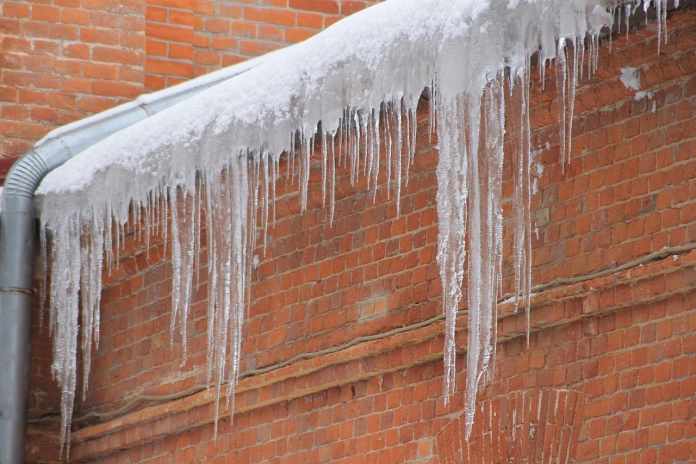With the cold weather setting in, most homeowners are wrapping up the last of their autumn maintenance and getting ready for a cozy winter. But if you want to make sure you’re ready for the worst the season can bring, you need to be prepared for the possibility that you might need to deal with unexpected winter roofing repairs in the coming months.
When a leak springs in the middle of the night or a build-up of ice causes your gutters to come crashing down, the last thing you want to have to do is start researching what to do. If you want to know when to get in touch with a roofing company for help with emergency repairs and when to take care of them yourself, this checklist can help you make the right call.
Table of Contents
1. Roof Leaks
If you live in an area where winter temperatures typically stay below freezing, the most common cause of roof leaks is not actually damaged shingles or roofing membrane, but flashing problems related to skylights or chimneys.
Heat rising from within the house often causes the snow to melt around skylights or stacks, which is one of the reasons these areas are typically reinforced with aluminum flashing. But if the flashing is torn or punctured, meltwater can work its way inside your home.
These leaks are among the most serious issues you can have with your roof, and require professional repairs immediately.
2. Gutter Damage
One of the most common types of winter roofing repairs damage occurs when ice builds up in eavestroughs and gutters, pulling them away from the building and even causing them to come down altogether.
Icicles might seem charming and wintry, but they are actually a sign that something has gone wrong with your roof system. In particular, icicles indicate that one (or all) of the following things has happened:
- Due to improper ventilation, an ice dam has formed along your eaves
- Leaf-filled gutters are interfering with drainage
- Clogged downspouts have left the water nowhere to go
If your gutters come down during the winter months, you’ll need to get in touch with a Toronto roofing company that can repair them in time for the spring melt.
3. Moisture and Mold
Perhaps the most insidious type of roof damage that occurs during winter happens inside the roof itself. Improper ventilation and insufficient insulation can cause moisture to build up in your attic, leading to a more humid environment that is a breeding ground for mold.
If your walls are often damp, the spread of black mold is probably already starting inside your attic space, and it’s just a matter of time before it spreads into your living area as well. Fortunately, getting a Toronto roofer to cut some emergency vents will nip this process in the bud.
Emergency preparedness has always been a big part of responsible homeownership, so don’t let an unexpected roofing problem catch you napping in the coming months.
If something happens in the dead of January, knowing exactly who to call to help you deal with it will help you maintain your peace of mind and enjoy a restful and relaxing winter.








